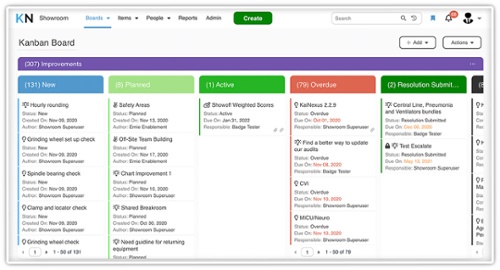 In an era where efficiency and agility are paramount, Lean business transformation has emerged as a pivotal strategy for organizations aiming to streamline operations and enhance value creation. By adopting Lean principles, companies can significantly reduce costs, improve quality, and accelerate time-to-market. In today's dynamic business environment, the Lean method is prized for its adaptability across various industries, from manufacturing to services, and its ability to ensure that businesses remain competitive and responsive to market changes.
In an era where efficiency and agility are paramount, Lean business transformation has emerged as a pivotal strategy for organizations aiming to streamline operations and enhance value creation. By adopting Lean principles, companies can significantly reduce costs, improve quality, and accelerate time-to-market. In today's dynamic business environment, the Lean method is prized for its adaptability across various industries, from manufacturing to services, and its ability to ensure that businesses remain competitive and responsive to market changes.
Lean principles foster a culture of innovation and strategic thinking within organizations. By encouraging employees at all levels to identify inefficiencies and propose improvements, The Lean business management strategy enables companies to create an environment where innovative ideas flourish. The benefits of successful Lean transformation over traditional business practices include improved financial performance, increased employee engagement, and a stronger market position.
The Principles of Lean Transformation
Lean thinking is guided by a set of fundamental principles that aim to enhance efficiency, eliminate waste, and maximize customer value.
Value: The first principle is to define value from the customer's perspective. This involves understanding what the customer wants and is willing to pay for. By focusing on delivering products and services that meet customer needs, businesses can ensure their efforts align with creating real value.
Value Stream: The next step is to map the value stream. This involves identifying all the steps in delivering a product or service, from raw materials to finished goods. The goal is to visualize the flow of value and pinpoint areas where waste occurs, such as unnecessary steps, delays, or bottlenecks.
Flow: After identifying waste, the flow principle emphasizes creating a smooth, uninterrupted flow of work processes. This means organizing tasks so that work moves seamlessly from one stage to the next without delays or disruptions. Ensuring a steady flow helps reduce lead times and increase efficiency.
Pull: The pull principle ensures that work is initiated based on customer demand rather than forecasts or schedules. By producing only what is needed, when required, and in the quantity needed, businesses can minimize excess inventory and reduce the risk of overproduction.
Perfection: The final principle is the pursuit of perfection through continuous improvement. The Lean transformation model is not a one-time effort but an ongoing process of identifying and eliminating waste, refining processes, and enhancing value.
In manufacturing, Lean principles are extensively applied to streamline production processes, reduce waste, and enhance product quality. In healthcare, Lean principles transform patient care delivery by reducing waste and improving process efficiency. In the technology sector, Lean principles help companies develop innovative products and services faster and more efficiently.
Implementing a Lean Framework
Implementing Lean in business involves a structured approach to ensure successful adoption and sustainable improvements. Here are the key steps to introduce Lean:
Assessment and Planning: Begin by thoroughly assessing the current state of the organization's processes identifying areas of waste and inefficiencies. Engage leadership to gain their commitment and support for the Lean transformation. Develop a clear plan that outlines the goals, scope, and expected outcomes of implementing Lean principles.
Education and Training: Educate employees about the Lean methodology, its principles, and its benefits. Provide comprehensive training sessions to ensure everyone understands Lean concepts such as value, value stream, flow, pull, and continuous improvement.
Value Stream Mapping: Conduct value stream mapping sessions to identify and visualize the flow of materials and information through critical processes. Collaborate with cross-functional teams to map the current state of these processes, highlighting areas of waste and inefficiencies. Develop future state maps that outline improved processes with reduced waste and enhanced flow, setting the stage for targeted improvements.
Continuous Improvement and Scaling: Foster a culture of continuous improvement by encouraging employees to identify and suggest improvements regularly. Establish mechanisms for ongoing feedback, problem-solving, and knowledge sharing. Gradually scale the Lean implementation across the organization, using the lessons from pilot projects to guide broader rollouts.
Sustaining and Embedding Lean Culture: To sustain Lean practices, integrate them into the organization's culture and daily operations. Ensure the leadership team remains actively involved and continues to champion Lean principles.
Lean Tools and Techniques for Innovation
Lean methodology in business encompasses various tools and techniques designed to improve efficiency, reduce waste, and enhance value. In addition to a structured continuous improvement solution, here is a brief overview of some popular Lean tools for business.
Kanban: Kanban is a visual workflow management tool that helps teams manage work by visualizing tasks and their statuses. It uses cards and boards to represent work items and the stages of the process they pass through. By limiting the work in progress (WIP), Kanban ensures a smooth flow of tasks, prevents bottlenecks, and enhances productivity.

5S: The 5S system is a workplace organization method that creates and maintains a clean, orderly, and efficient work environment. The five S's stand for Sort, Set in order, Shine, Standardize, and Sustain. The 5S system helps reduce waste, improve safety, and enhance productivity.
Kaizen: Kaizen, which means "continuous improvement" in Japanese, is a philosophy and practice that encourages all employees, from top management to frontline workers, to contribute ideas for improving processes. Kaizen focuses on incremental changes rather than large-scale transformations. This approach fosters a culture of continuous improvement, enhances teamwork, and boosts employee engagement by valuing their contributions.
Six Sigma: Six Sigma is a data-driven methodology that improves process quality by identifying and eliminating defects and reducing variability. It uses statistical tools and techniques to analyze and improve workflows.
Measuring the Impact of Lean Transformation
Organizations use various metrics and Key Performance Indicators (KPIs) to assess the effectiveness of Lean business transformation, measuring different operational and strategic performance aspects. Here are three standard metrics and KPIs:
Return on Investment (ROI): ROI measures the financial return generated from the investment in business transformation initiatives. A positive and increasing ROI indicates that the transformation yields economic benefits, justifying the resources and efforts spent.
Customer Satisfaction (CSAT): Customer satisfaction is a critical metric that reflects how well the business transformation meets or exceeds customer expectations. CSAT is typically measured through surveys and feedback tools, asking customers to rate their satisfaction with the company's products, services, and overall experience. High and improving CSAT scores indicate that the transformation efforts positively impact customer perceptions and experiences.
Operational Efficiency: Operational efficiency metrics assess how well the organization utilizes resources to achieve desired outcomes. Key indicators include productivity rates, cost savings, and process cycle times. For example, measuring the reduction in process cycle times can show how effectively Lean strategies for innovation are being implemented. Increased productivity and significant cost savings indicate that the transformation efforts successfully optimize operations and eliminate waste.
Overcoming Resistance to Change
One of the primary reasons for a Lean transformation fail is resistance to change. Employees accustomed to established processes and routines may find it challenging to adapt to new methodologies. They may fear that Lean process improvement will increase workloads or impact job insecurity. Another significant obstacle is the inconsistency in leadership commitment. If leaders do not fully endorse and actively participate in the Lean transformation, it can lead to a lack of direction and support, causing the initiative to falter.
To cultivate a culture that embraces Lean management principles and continuous improvement strategies, organizations should focus on building a supportive and empowering environment. Encouraging a mindset of learning and experimentation allows employees to feel safe in suggesting and testing new ideas without fear of failure. Recognizing and celebrating successes, no matter how small reinforces the value of continuous improvement and motivates employees to keep striving for better results.By fostering a culture that values and rewards continuous improvement, organizations can ensure that Lean transformation efforts are not just a one-time initiative but an enduring part of their operational ethos.
Conclusion
Lean business transformation represents a robust framework for organizations seeking to thrive in today's dynamic and competitive landscape. By embracing Lean principles, companies can unlock new opportunities for innovation, efficiency, and customer-centricity, driving sustainable growth and staying ahead in the market. As the business landscape continues to evolve, the transformative power of Lean organizations becomes increasingly evident, enabling organizations to adapt quickly to change, optimize their operations, and deliver more value to customers. The time is now for organizations to take action and embark on their Lean journey, harnessing the transformative potential of the Lean management system to shape the future of business innovation and secure their position as leaders in their respective industries.




Add a Comment